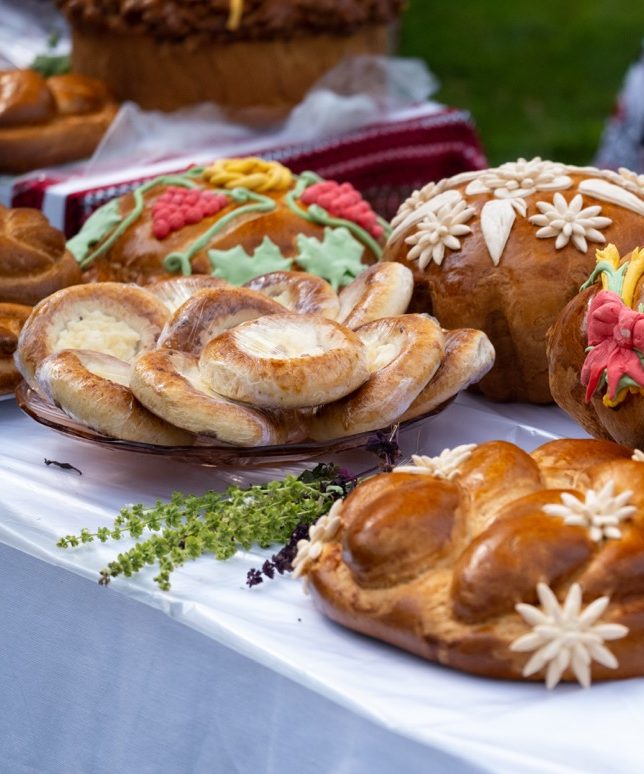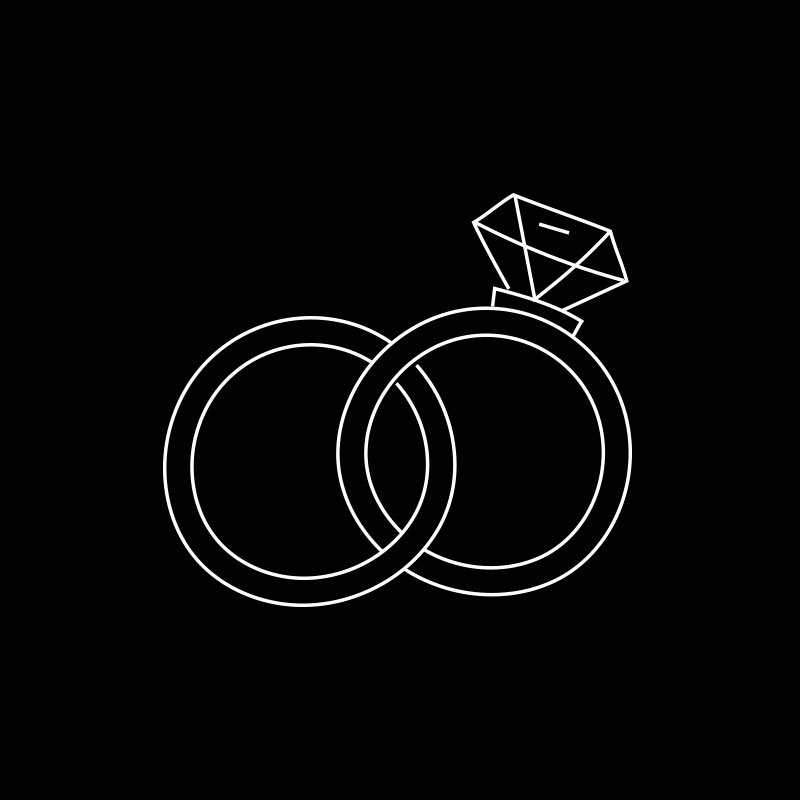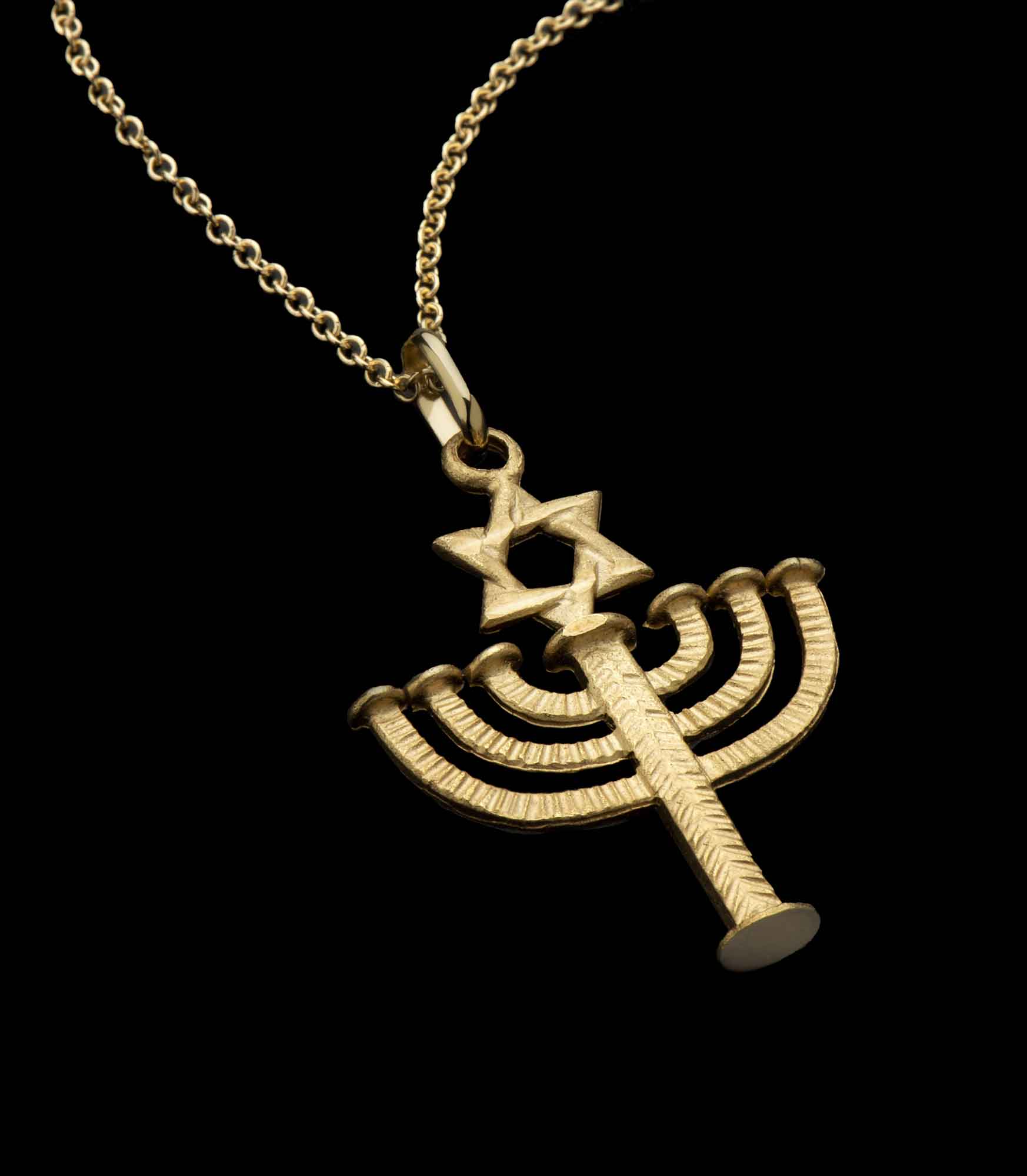Requirements for the ceremony
The Jewish wedding is an ancient rite founded on deep-rooted traditions, and has some very specific and essential requirements, the first of which is sharing the same faith. To respect the roots and importance of Judaism, if one of the future spouses is not Jewish, they will have to convert before they can get married.
Choosing the right moment for the ceremony is another fundamental step. The wedding cannot be celebrated during Shabbat—that is from sunset on Friday until sundown on Saturday—nor during any other Jewish holiday, or the last three weeks of summer.
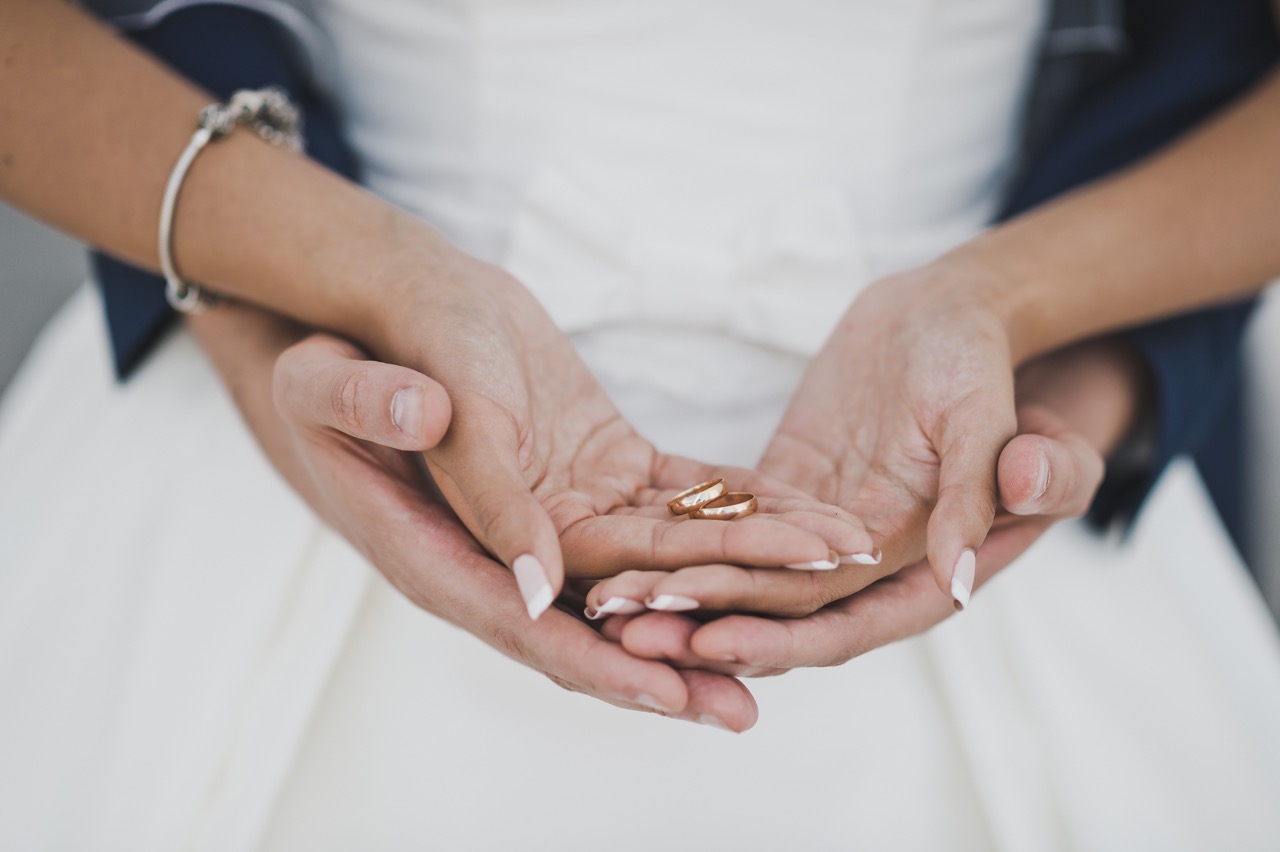
The first steps to celebrate the Jewish rites
To get started with the wedding process it is necessary to prepare the papers to draw up the marriage contract, called Ketubah. This document will be handed over to the Rabbinical Office, after setting the wedding date and publishing the banns.
During the ceremony proper, the document will be blessed by the rabbi and signed by the bride and groom.
After these procedures and before celebrating the wedding, the bride will have to organise the Tevilah, a purification ritual usually performed in a Mikveh, a bath filled with spring or rain water. This gesture symbolises rebirth into a new life, that is marital life.
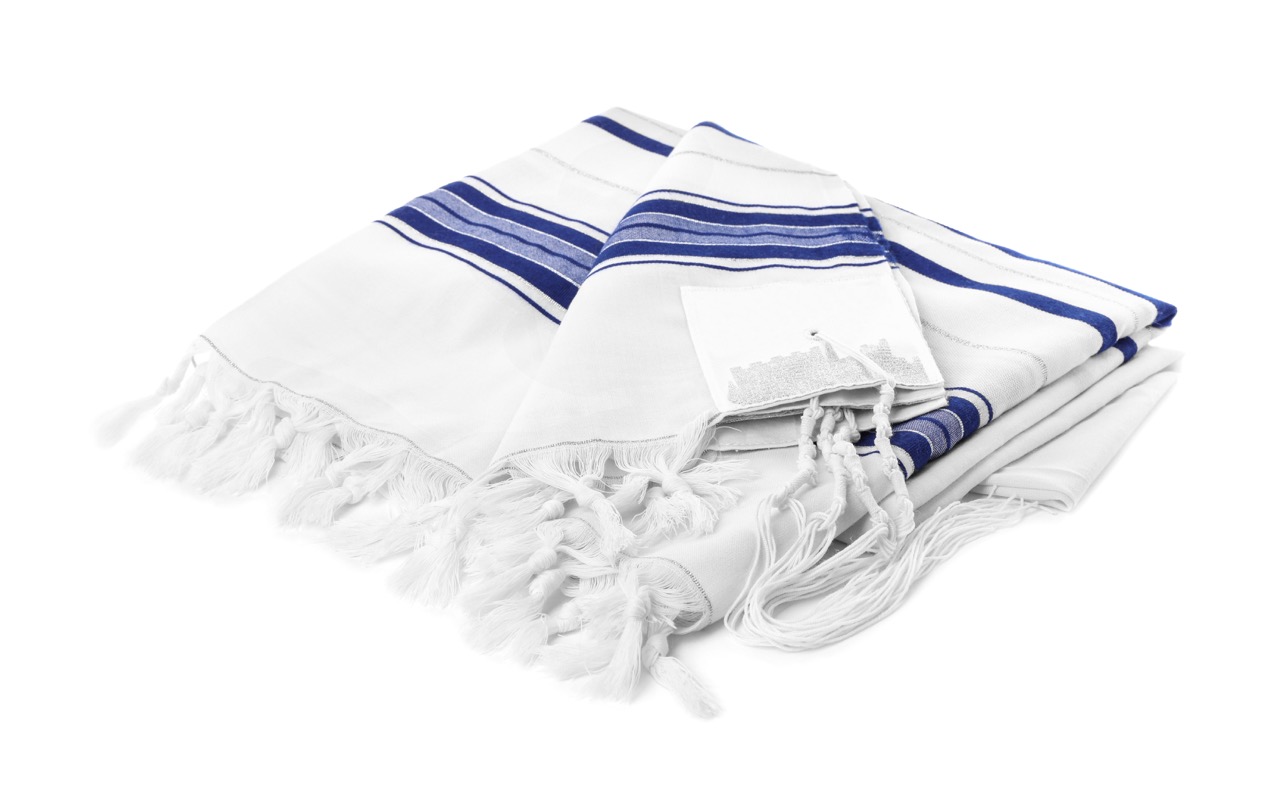
The ceremony: Jewish traditions
On the wedding day, the couple goes to the Synagogue or the location previously selected with the rabbi. From there, the wedding procession heads to the where the wedding is held.
The bride wears a white gown, while the groom wears a light kittel or a Tallit, a traditional garment. White, for the bride, represents virginity, purity, and the start of a new, pure life with her future husband. The groom’s kittel symbolises eternal life after death, and hope for a prosperous life on Earth. Apart from these garments, the groom and the rabbi wear a kippah, the traditional round cap used in places of worship.
In the Jewish rite, it is common practice for the couple not to meet for the whole week preceding the wedding. However, on the day itself, it is tradition that the groom go to the bride’s room to see her, before covering her face with a veil in a rite called Bedeken.
The setting for the ceremony
The rabbi acts as officiant during the ceremony, which happens under the Chuppah: a cloth canopy that represents the couple’s future home. The structure is made by a white or red cloth with gold edging, often decorated with flowers and natural elements, held up by four beams. The cloth can also be a sheet or even a tallit.
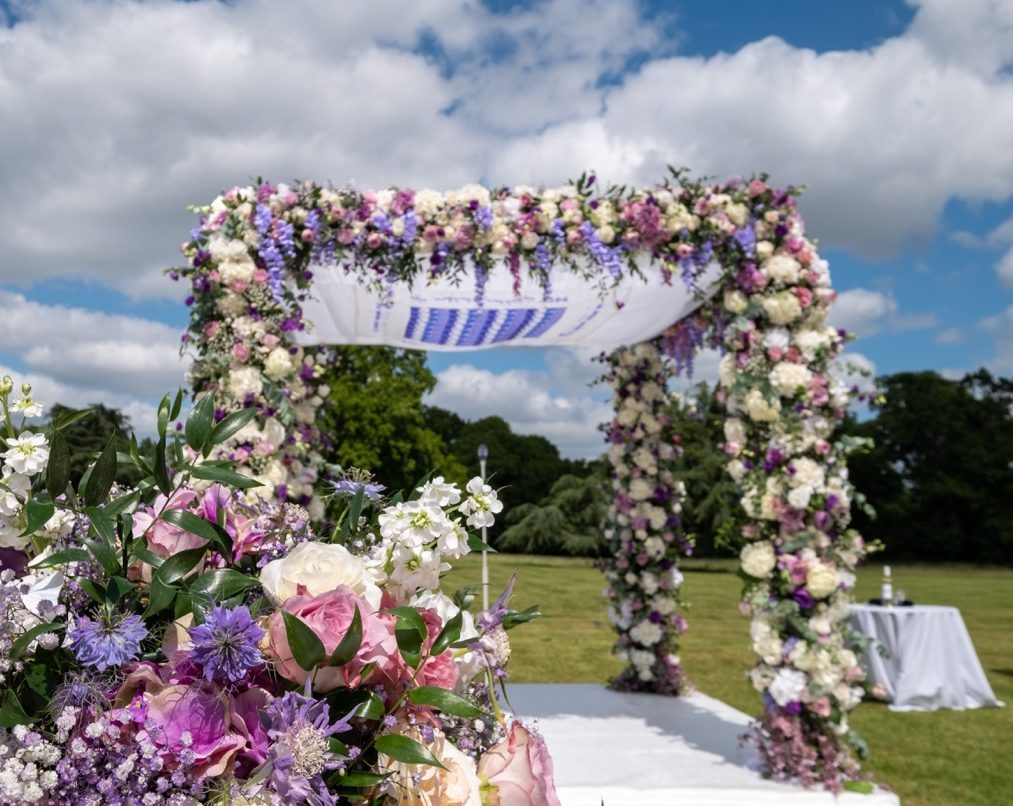
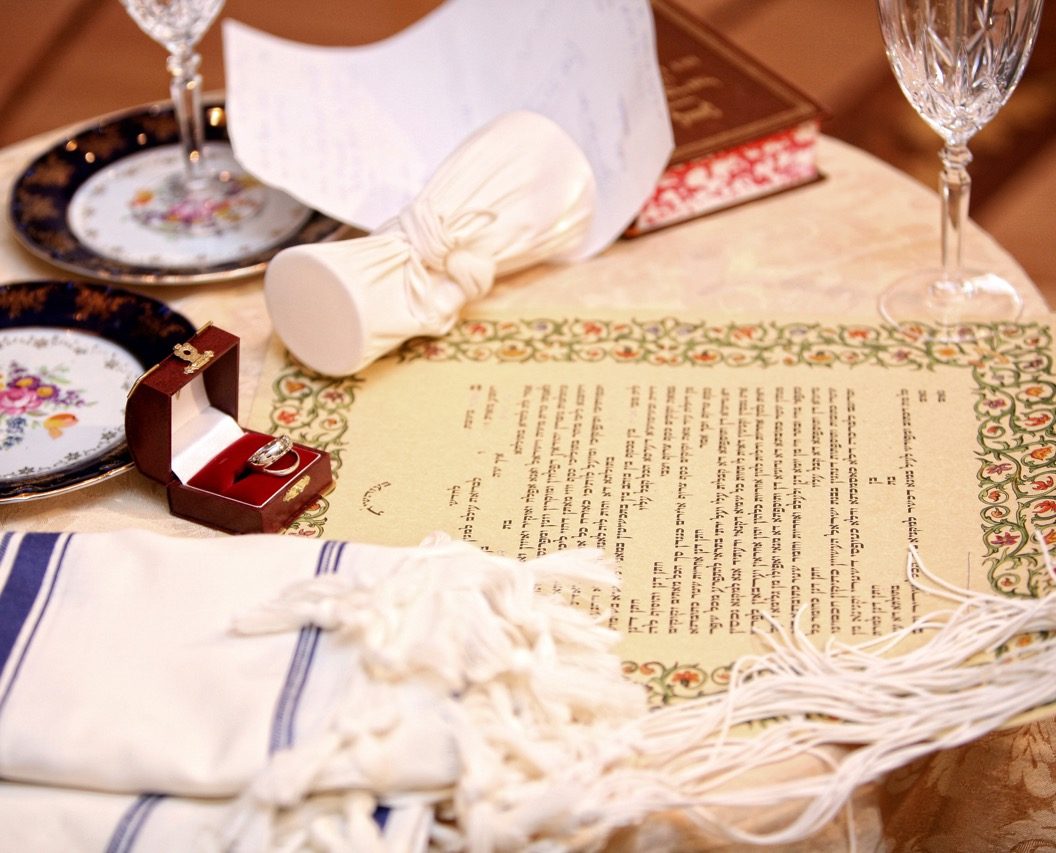
The steps of the ceremony
The guests and female relatives are often the first to enter the location chosen for the ceremony, where they wait for the rite to begin. Afterwards, the rabbi comes to stand under the canopy, followed by the groom, the male relatives, and lastly the bride accompanied by her father.
In the first part of the ceremony, called Kiddushin, the groom gives the celebrant the ring meant for the bride. It is a simple yellow gold band that represents the beauty of a balanced marriage, the protection that the groom offers the bride, and the bond of eternal love uniting the couple.
During the second part, called Nissuin, the rabbi blesses a cup of wine, and gives it to the bride and groom to drink. Following the exchange of rings, the Ketubah is read in Aramaic. It is the marriage contract that states the duties of the couple, particularly of the husband towards his wife.
In conclusion, seven blessings are recited over a second cup, symbol of protection for the marriage. The couple drink from the glass cup several times, after which the groom sets the cup on the ground and crushes it with his foot. This is meant to remember the destruction of the Temple in Jerusalem or, according to other theories, to ward off evil spirits.
After this, the guests shout “Mazal Tov“, an expression of best wishes that accompanies the newlyweds in their new life together.
Reception and blessing of the Challah
After the ceremony, the wedding feast starts. It is initiated by a traditional rite, that is the blessing of the Challah, the typical braided bread that symbolyses the union of the families.
Between one course and the next, celebrations carry on with songs and dances, both traditional and modern. The horah, one of the most important lively dances, happens as soon as the newlyweds are introduced, or after their first dance, which is just as significant. It is a peculiar moment where friends and relatives lift bride and groom up into the air while seated on chairs and sway them to the rhythm of traditional Jewish tunes.
The Jewish wedding is a rite steeped in deep traditions and significance, characterised by specific requirements that reflect the importance of the Jewish faith. This union is not only a pact between two people, but also a celebration of the cultural roots and beliefs surrounding the community.
